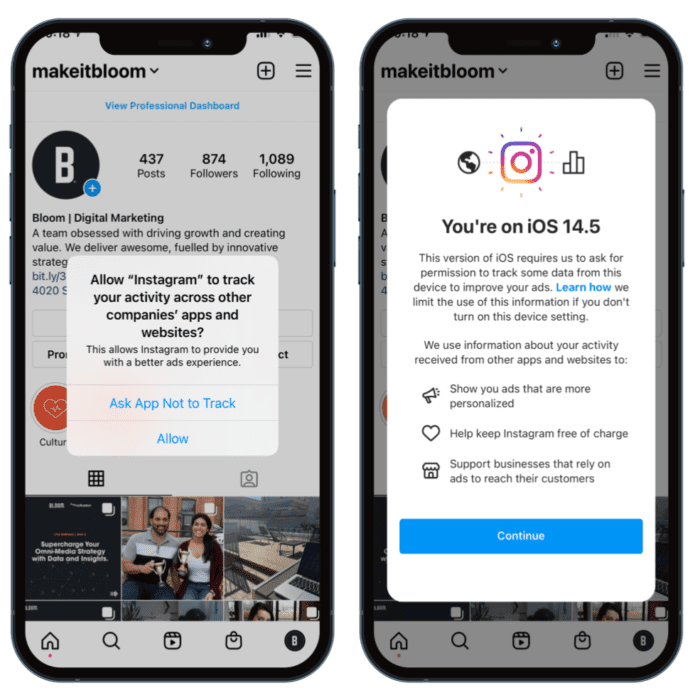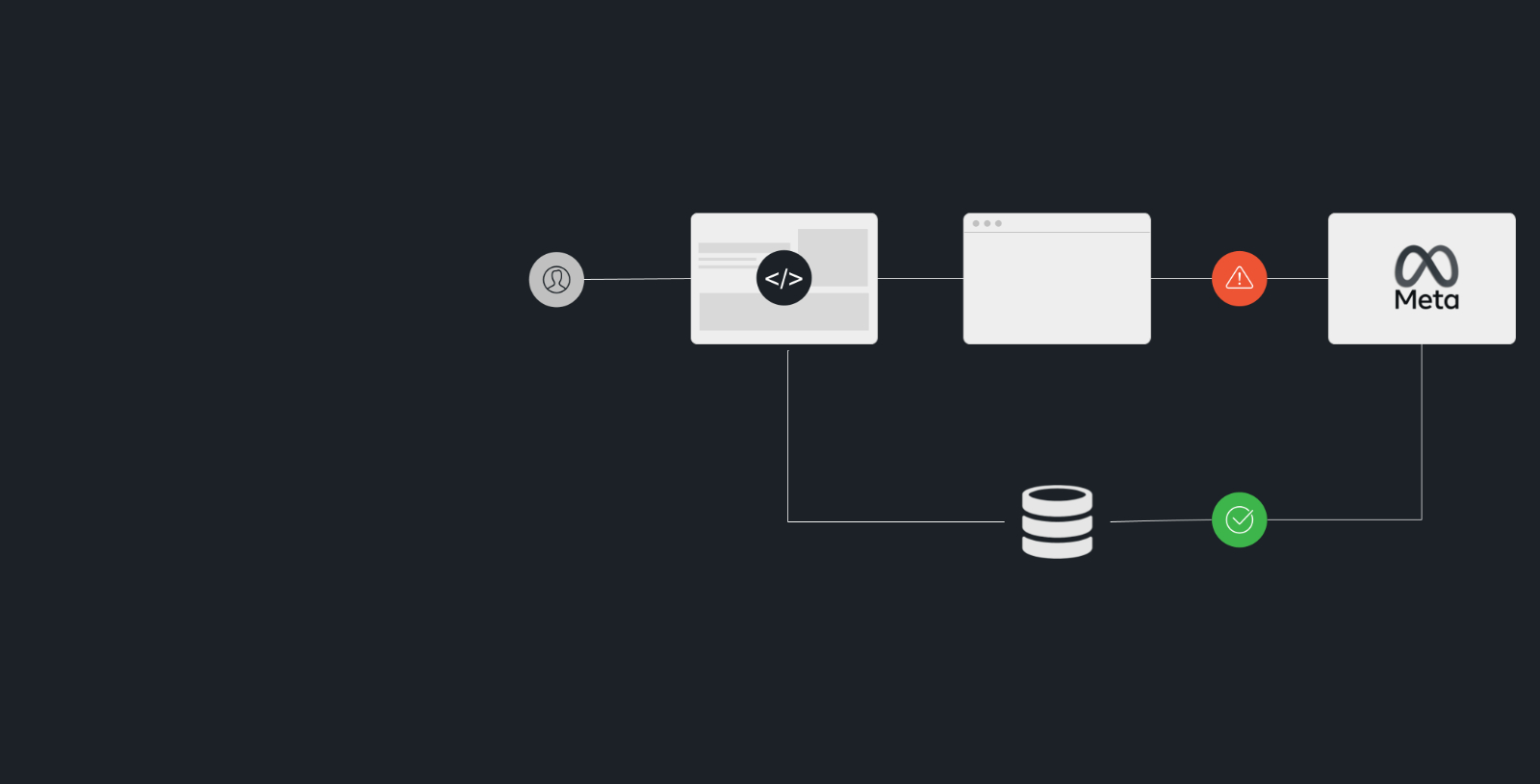From tech company policies to government regulations, the digital ads ecosystem is constantly evolving.
In 2015, the New Facebook Pixel was introduced and officially replaced the old version in 2017. At this point, even those who preferred working with the older version had to get on the same page as everyone else and jump on the new Facebook Pixel train.
The Facebook Pixel (now called the Meta Pixel) has since proven its utility with the creation of ads supported by advanced matching, custom conversion and more.
However, it is now the Facebook Pixel’s turn to be replaced. In fact, many marketers have already begun their transition to the newest tool: Facebook Conversions API (or CAPI).
If your business has yet to start using Facebook Conversions API, this blog post will help get you familiar with the tool as it will soon be mandatory across the Facebook advertising landscape.
What is the Facebook Conversions API?
With browsers implementing third-party cookie management policies that increasingly limit pixel-based tracking coupled with more browser users choosing to delete their cookies, the new pixel’s ability to track data is diminishing.
The conversions API helps fill in the missing gaps by working alongside the pixel in order to provide better tracking, conversion attribution, and overall Facebook marketing performance.
First, What It Is Not
Facebook Conversions API has what the pixel doesn’t: it’s free from cookies. But before delving into the benefits of CAPI, it is important to first understand what its complimenting tracking solution, the pixel, does (or doesn’t) bring to the table.
The Facebook pixel can be easily defined as a browser-side tool that tracks data through the user’s browser. However, a browser is also where a user can install cookies/ad blockers, disable cookies altogether, have an unstable connection or even have the browser itself crash, losing any valuable data pathways.
If relying on a browser alone doesn’t trigger wariness for your business, consider the most recent IOS 14.5 update, restricting the use of cookies for tracking on Apple mobile devices. This change in policy insinuates that the Facebook Pixel will no longer be enough to track how IOS users interact with your business as they may decide to enable the opt-in prompts in their browser’s privacy settings.

Users are therefore not consenting to third-party sites like Facebook to track their data and you might not be able to tell when a user lands on your website via Facebook, again losing valuable data pathways.
The Solution: Facebook Conversions API
On the flip side, Facebook Conversions API is a server-side tool that allows tracking through your website’s server rather than your user’s browser. Your tracking capabilities are then unaffected by your website visitor’s browser’s settings.
But What’s an API?
Short for application programming interface, an API is the unsung hero of our connected world. It’s the behind-the-scenes interaction of applications and devices that allow you to place an order or sign up for a membership in just a few clicks.
Put simply, an API is the messenger that takes your requests and communicates it to a system that holds the corresponding response and returns that same response back to you.
APIs offer flexibility, simplicity, time-and-money-saving opportunities for when you want to develop an app, design new tools or even manage products you currently offer.
So How Does the Facebook Conversions API Work?
Within the Facebook realm, there currently exist a couple 3rd party cookie workaround solutions, one of which is the Facebook Conversions API.
The Conversions API better measures ad performance and attribution across a customer’s full journey, from discovery to conversion. This helps understand how digital advertising impacts both online and offline results.
Formerly called Facebook Server-Side, the Conversions API’s main purpose was to send information that could not be captured with the pixel (such as in-store sales or calls) to take performance reporting and optimization to the next level.
Quick Reminder: As for the pixel, it collected information about activities on a site and sent it back to Facebook thanks to third-party cookies (which allow information to be shared between two different domain names).
Yet with the upcoming disappearance of third-party cookies, CAPI makes it possible to continue sending information to Facebook by shifting the data transfer to the server side and thus bypassing the limitations (cookies) on the client side.
What does the Facebook Conversions API track?
The main difference in tracking methods between the pixel and CAPI is that the latter tracks “server events” instead of “browser events”. In server events, there are three different types of data:
- Web conversions (sales or signups)
- Post-conversion events (like deal closed)
- Page visits
The different data types offered by the CAPI are crucial to ad targeting/reporting, obtaining superior audience insights, creating dynamic ads, and improving conversion rate.
Conversions API, an extension of the Facebook Pixel
Just because the Facebook pixel is limited by the third-cookie phaseout does not mean businesses shouldn’t continue using it. Instead, they should take advantage of its combination with the CAPI integration.
Using both can improve tracking accuracy, ad performance, ease of use for clients and maximizes chances of registering a conversion. When you use the Facebook Conversions API alongside the Pixel, it creates a more reliable connection that helps the delivery system decrease your cost per action. This means that advertisers who don’t use both, let alone decide not to make the switch to CAPI, will be forced to optimize for lower value actions, causing an average 150% increase in cost per acquisition.
Furthermore, when implemented simultaneously along the Pixel, the conversions API gives you more control over what you share and when you share it while providing better visibility into conversions through the ability to pass additional information like customer relationship management data and qualified leads. As a result, marketers hold a 360-degree view on sales funnels, giving greater control over the data to track.
What Combining the Two Brings to Light
Tracking the same events using both tools brings up the notion of deduplication, also known as a “redundant set-up”. This occurs when an event registers certain conversions twice, to which Facebook has the ability to discard the duplicate.
Limitations of Integrating the CAPI
- It’s more complex to integrate CAPI than web pixels as it requires special skills if you want to add it to your platform without the help of a development partner.
- The cost of infrastructure/hosting servers.
- CAPI is a bypass on capturing anonymized user data, meaning it doesn’t cover a user’s entire customer journey. As it only tracks the final moments, the CAPI will still need support from the Facebook pixel to track the upper and middle layers of the advertising funnel.
Closing Remarks
We hope this article helped shed some light on the Facebook Conversions API integration. If you need help setting up your Facebook pixel or conversions API on your website or have any questions on the subject, our experts are glad to lend a hand.
Read it first:
Get new articles delivered to your inbox
ABOUT THE AUTHOR
Gael Cottet
Gael is the Marketing Analytics Director at Bloom.




Share this: